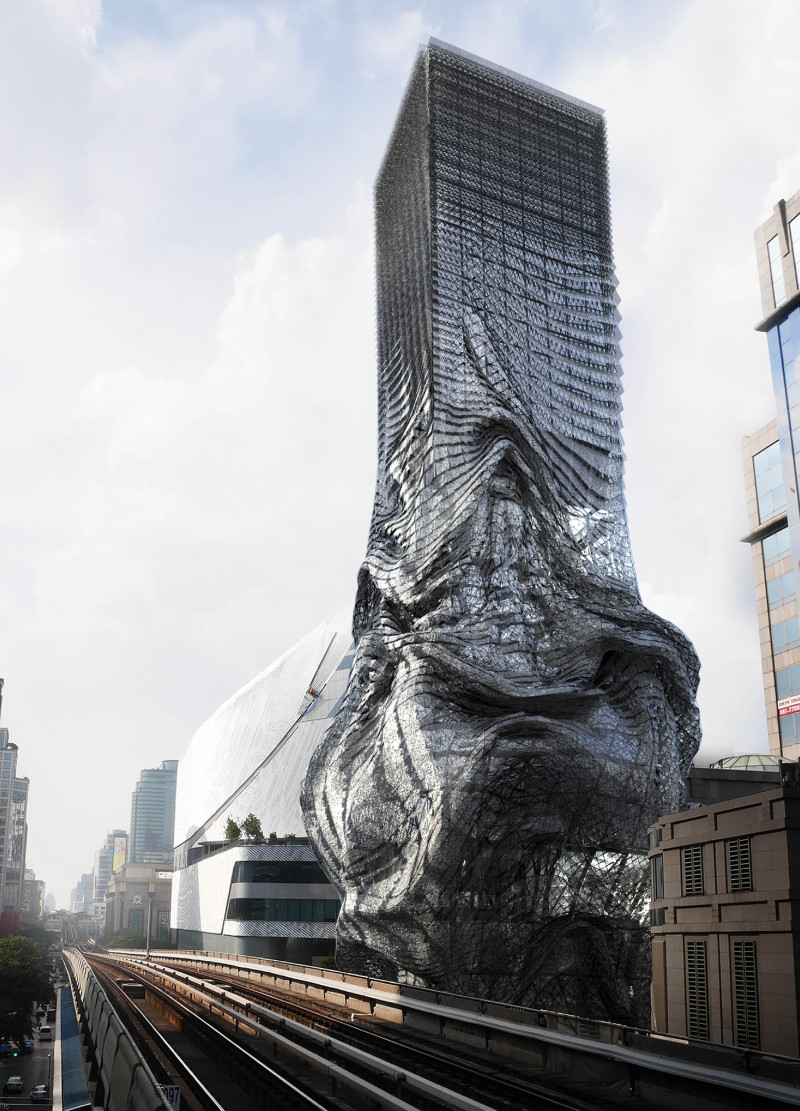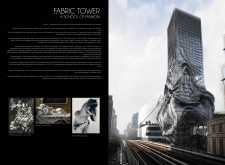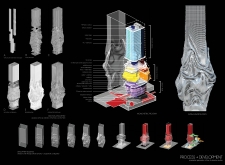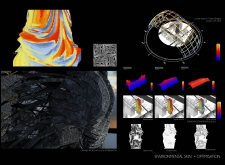5 key facts about this project
The primary function of the Fabric Tower is to serve as an educational facility tailored to the needs of aspiring fashion designers. It houses classrooms, design studios, exhibition spaces, and communal areas, fostering an environment conducive to creativity and collaboration. The design emphasizes flexibility, allowing spaces to adapt to various educational activities, from lectures and workshops to fashion shows. This adaptability is a crucial aspect of the design, as it mirrors the fluid nature of both fashion and modern educational practices.
Significant elements of the Fabric Tower include its unique facade, which employs a series of undulating surfaces reminiscent of fabric draping. This architectural choice not only provides visual interest but also enhances the building's functionality by optimizing daylighting and mitigating solar gain. The facade is constructed using glass and composite materials, reflecting the interplay of transparency and texture that is essential in fashion design. The design also integrates structural steel to ensure stability while allowing for the dramatic forms that characterize the building.
Inside, the multi-level atrium serves as the heart of the Fabric Tower, acting as a social hub and a gallery space where students can display their work. This central area fosters interaction among students and faculty, encouraging collaboration and the exchange of ideas. The arrangement of classrooms and studios is strategically organized around this atrium, promoting a sense of community while allowing for acoustic privacy where needed.
One of the unique design approaches in this project is the attention to environmental sustainability. The building incorporates natural ventilation and shading systems derived from the patterns in its facade, demonstrating a commitment to reducing energy consumption and enhancing occupant comfort. This architectural response to climate reflects a growing awareness within the design community of the importance of sustainability in educational facilities.
The Fabric Tower also connects to the local cultural context of Bangkok, acknowledging the rich history of textile production in the region. By weaving local cultural elements into its design, the project establishes a dialogue between contemporary architectural expressions and traditional practices. This contextual sensitivity enriches the educational experience for students, grounding their studies within the local heritage of fashion and textiles.
Overall, the Fabric Tower is a thoughtfully designed educational facility that emphasizes collaboration, creativity, and sustainability in fashion education. Its architectural expressions are firmly rooted in the concept of fabric, making a clear statement about the relationship between space and the art of fashion design. This project invites further exploration, allowing readers to delve deeper into its architectural plans, sections, and design ideas for a comprehensive understanding of its significance and impact in the realm of architecture and education.


























